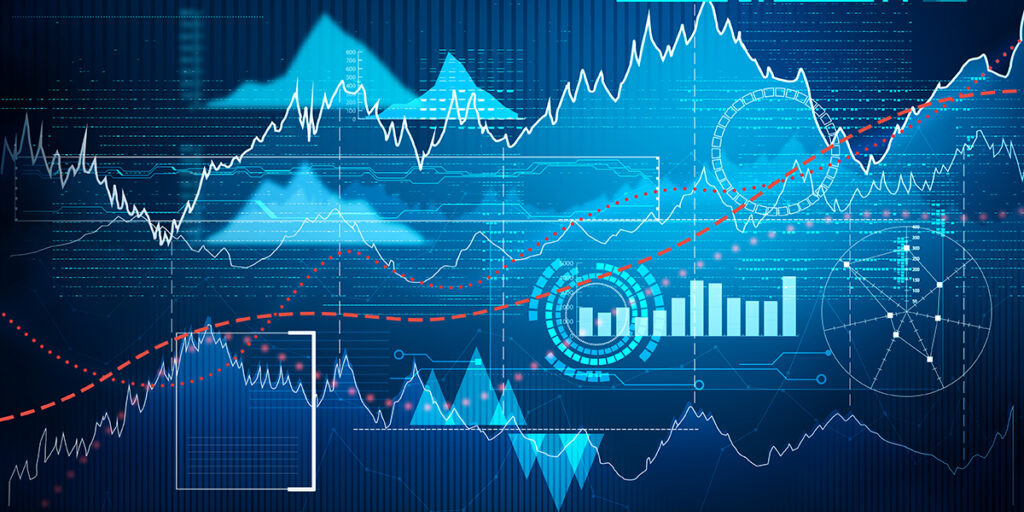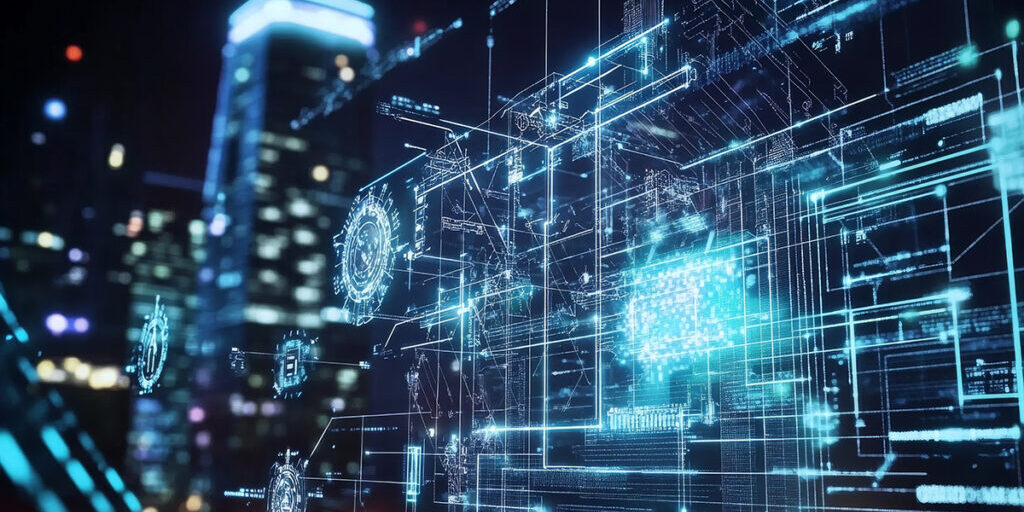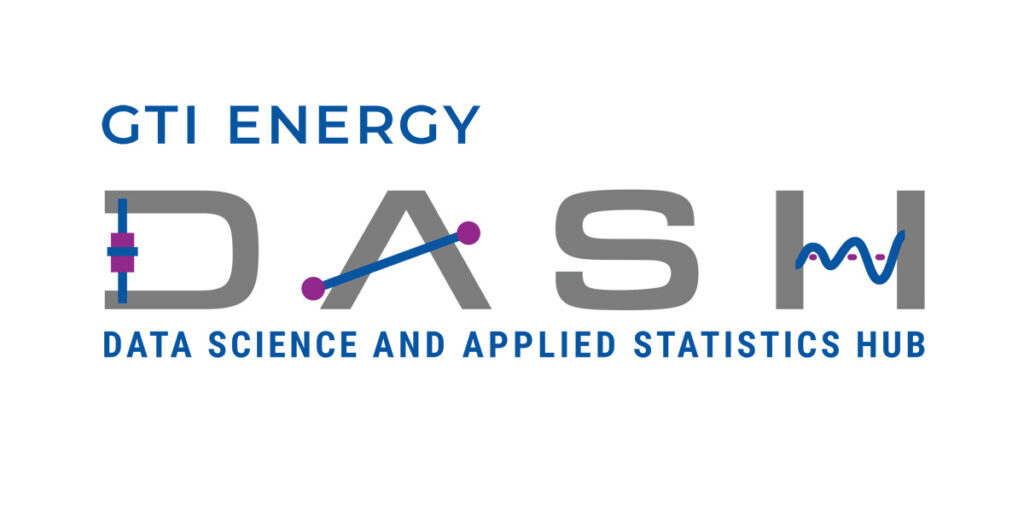Digital solutions are critical to ensure safety, economic growth, and low-emission, resilient energy systems. With new ways of collecting, storing, and analyzing data, today’s world is increasingly data-driven. Digital solutions are required for harnessing the power of these data. GTI Energy’s Digital Innovation team consists of data scientists, statisticians, software developers, GIS analysts, modelers, and other subject matter experts who help our customers realize the potential of their digital assets to optimize energy system performance, affordability, efficiency, and reliability.
Today’s energy systems are extremely complex. The ways we make, move, store, and use fuels and gases for low and no-carbon energy solutions are continually evolving. Furthermore, the development and deployment of new sensors and measurement systems have created unprecedented volumes of data on these systems.
Emerging digital solutions have enabled the extraction of insights from these large volumes of data and help simplify complexity. Artificial intelligence and machine learning allow us to extract and process information in new ways. Software systems put actionable information in the hands of decision-makers. Integrated data platforms enable data interoperability. Energy systems models allow us to compare the effectiveness of current strategies in hypothetical futures. These digital solutions, and others, reveal improved ways of operating, providing a line of sight for making critical decisions.
Today, we’re using digital solutions to improve field operations, data collection approaches, and GIS systems. We analyze data to understand how we can make improvements and maximize the use of our current infrastructure. We’re exploring AI applications and taking a more predictive approach to operations, at times even changing business processes to leverage more automation and predictivity.
GTI Energy’s Digital Innovation team supports its customers across the data value chain: from collection to management to analysis and to product development. We are home to practitioners and subject matter experts with decades of combined experience practicing in the digital space. We help our customers develop innovative solutions to their digital challenges.
Project Highlight:
Design of an Integrated Methane Monitoring Platform (IMMP)
 With the development of new methane detection and quantification technologies and advancement of remote sensing technologies, methane monitoring data of oil and gas infrastructure is now pervasive across the industry. Recognizing the untapped potential of this disparate data, the Digital Innovation team was awarded a grant by Department of Energy in 2023 to the answer the question: What would it take to build an integrated methane monitoring platform and what would an ideal platform look like?
With the development of new methane detection and quantification technologies and advancement of remote sensing technologies, methane monitoring data of oil and gas infrastructure is now pervasive across the industry. Recognizing the untapped potential of this disparate data, the Digital Innovation team was awarded a grant by Department of Energy in 2023 to the answer the question: What would it take to build an integrated methane monitoring platform and what would an ideal platform look like?
To answer this complex and challenging question, the team worked with a wide range of stakeholders and subject matter experts to identify requirements and create a blueprint for a platform that enables data interoperability to support emissions monitoring, estimation, and reductions. The team considered different user perspectives and created high-priority use cases reflecting what each user type might desire in a platform. The final report and supporting information from this project are available for download.
Project Highlight:
Natural Gas Trends Model
 GTI Energy's Natural Gas Trends (NGT) Model is a comprehensive initiative aimed at understanding the impact of uncertainty around the future demand for gas on distribution utilities. As the transition towards cleaner and more sustainable energy sources gains momentum, utilities need to be prepared for the implications to their systems. This necessitates in-depth analysis of economic viability and operational challenges that the future might hold. The NGT Model provides Local Distribution Companies (LDCs) with data-driven insights and practical recommendations to understand these challenges and develop strategies for monitoring and managing uncertainties. The NGT Model focuses on simulating gas demands through natural gas distribution networks at the infrastructure scale to provide utilities with insights into the potential impacts and challenges associated with the uncertainty around the future demand for gas. The model includes core functionality for applying strategies and scenarios to gas networks, focusing on questions around economic viability. Future releases will add functionality to evaluate safety risks and emissions, allow hydrogen blending, and improve the user interface and data management.
GTI Energy's Natural Gas Trends (NGT) Model is a comprehensive initiative aimed at understanding the impact of uncertainty around the future demand for gas on distribution utilities. As the transition towards cleaner and more sustainable energy sources gains momentum, utilities need to be prepared for the implications to their systems. This necessitates in-depth analysis of economic viability and operational challenges that the future might hold. The NGT Model provides Local Distribution Companies (LDCs) with data-driven insights and practical recommendations to understand these challenges and develop strategies for monitoring and managing uncertainties. The NGT Model focuses on simulating gas demands through natural gas distribution networks at the infrastructure scale to provide utilities with insights into the potential impacts and challenges associated with the uncertainty around the future demand for gas. The model includes core functionality for applying strategies and scenarios to gas networks, focusing on questions around economic viability. Future releases will add functionality to evaluate safety risks and emissions, allow hydrogen blending, and improve the user interface and data management.
Decarbonization goals involve changes in gas demand, and policies on natural gas restrictions are generally consistent with other environmental objectives to dramatically reduce greenhouse gas (GHG) emissions. However, decarbonization modeling does not represent gas infrastructure well, as changes in pipeline gas in many decarbonization scenarios are not matched by a decline in natural gas infrastructure. The NGT Model addresses these gaps by providing a detailed analysis of the economic viability and operational challenges associated with maintaining the gas pipeline infrastructure. This helps utilities make informed decisions about their systems and strategies in the face of changing demand and regulatory landscapes.
Key Initiatives
Learn More
Contact the energy experts today









